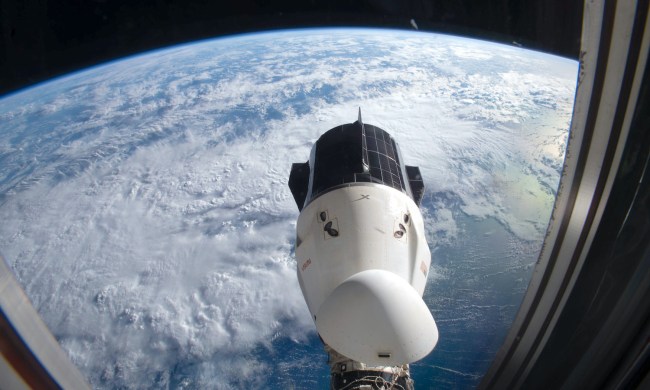Witnessing an explosion involving a carefully constructed piece of space kit doesn’t seem like a good thing, but engineers at Sierra Space was entirely happy to see the LIFE (Large Integrated Flexible Environment) habitat torn apart in a recent burst pressure test because it helped them learn more about its capabilities.
A video (below) shows the habitat explode when it can no longer handle the huge forces acting upon it.
The pressure test, the second of its kind since January, took place at NASA’s Marshall Space Flight Center in Huntsville, Alabama, last month.
The inflatable habitat, which could one day accommodate astronauts in low-Earth orbit, is made from high-strength webbings and fabric that form a solid structure once pressurized. The multiple layers of soft materials that make up the shell can be compactly stowed in a rocket’s payload fairing and inflated when ready for use, enabling the habitat to launch on a single rocket rather than requiring multiple trips.
Sierra Space released some stats for the latest test:
- The test unit stood over 20 feet tall and was comparable in size to an average family home.
- The article was 300 m³ in volume, or one-third the volume of the International Space Station.
- Test results exceeded NASA’s recommended x4 safety levels by 22%
- Two 4-foot by 4-foot steel blanking plates were integrated into the highest loaded cylinder section of the article; both were 50 pounds lighter than the ones used in the first full-scale test and accommodate larger windows.
Testing the facility to its failure point demonstrates the habitat’s capabilities and provides engineers on the project with critical data supporting NASA’s inflatable softgoods certification guidelines, which recommend a progression of tests to evaluate the materials.
“We’ve taken a softgoods system that very few companies around the world have been able to design, and now we have consistent, back-to-back results,” said Shawn Buckley, vice president of Earthspace Systems, Space Stations, at Sierra Space. “A second successful full-scale test is an absolute game changer. We now know it’s possible to equal or surpass the total habitable volume of the entire International Space Station, in a single launch.”
The inflatable module is set to be used for human habitation in orbit, such as on Blue Origin’s commercial space station, Orbital Reef, as part of NASA’s Commercial Low-Earth Orbit Development Program.


